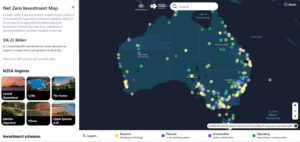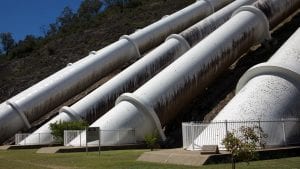
Credit: UNFCCC/Flickr
Background
In becoming a signatory to the Paris Agreement, the federal government has accepted the risk of a significant future liability as Australia begins to transform its economy. At the same time, debate continues over the design of policy to meet Australia’s current and future emissions targets, including which emission reduction opportunities should be pursued, and the cost of transitioning to a 1.5-2 degree aligned emissions trajectory.
While Australia’s policy environment remains uncertain, scrutiny of the impact of climate risk on Australian businesses has grown, with the Australian Securities and Investments Commission (ASIC) and the Australian Prudential Regulation Authority (APRA) affirming that companies will be required to systematically monitor, disclose and discuss the risks of climate change, in line with a 1.5-2 degree pathway under the Paris Agreement.
This has led to the more critical analysis of science based targets by Australian businesses as many high emitting companies seek to understand the potential cost and impact of transitioning to a 1.5-2 degree constrained pathway.
As decision makers seek robust figures from which to make more informed decisions, in this study, we provide a quantitative basis for identifying emissions reduction opportunities across the Australian economy, in the form of a marginal abatement cost (MAC) curve.
Analysis identifies over 150 greenhouse gas (GHG) abatement opportunities across 10 sectors of the economy, measuring the size and cost of each activity, and the potential for activities to contribute to a series of emissions reduction targets, and policies, under the Paris Agreement.
By providing a detailed view of abatement potential and costs by industry, the MAC curve provides key insights of which sectors are likely to contribute large-scale emissions reductions under the Paris Agreement, and the most effective levers to capitalise on abatement opportunities. In this way, modelling aims to support decision makers as they begin to explore the steps needed to meet a 1.5-2 degree target, and cost of transitioning the Australian economy.
Key findings – Meeting a 2°C target under the Paris Agreement
This article draws on our full market study, titled “Meeting a 2°C target: A cost curve for emissions reductions in Australia to 2030”. To view the full report, please click here.
Below, we summarise some notable findings:
Australia has ample domestic abatement to meet a 2-degree target under the Paris Agreement, with around 600 million tonnes (Mt) of emissions reductions available across the economy by 2030. This is equivalent to Australia’s emissions in 2005, the baseline year for Australia’s contribution to the Paris Agreement.
Australia is therefore able to easily meet a 45 per cent cut in emissions (abatement of 265 Mt) by 2030, the target recommended by the Climate Change Authority to contribute to limiting global warming increases to less than 2-degrees Celsius.
Chart 1: Marginal abatement cost (MAC) curve for Australia in 2030

Such a cut could be reached by implementing all abatement measures below $20 per tonne of carbon dioxide equivalent (CO2-e) in 2030, representing the marginal cost to industry of meeting the 2 degree target. Modelling indicates the marginal cost would rise to $60 per tonne of CO2-e to meet a target consistent with limiting warming to 1.5 degrees.
Notably, analysis indicates that Australia has a considerable number of opportunities to reduce emissions at a “cost saving” to investors, with 40 per cent of all emissions reduction activities within the MAC identified as providing a positive return to investors.
This includes activities such as distributed solar photovoltaics (PV), fuel efficiency and farm forestry, which provide a benefit to the investor of buying less energy or improving resource efficiency.
Should all negative cost opportunities be implemented, we estimate that that the total benefit would represent approximately $13 billion in savings in 2030. These savings are larger than the total cost of implementing all emissions reduction activities to meet a 2-degree target ($2 billion), indicating that, in theory, Australia could meet a 2-degree target at no net cost to investors.
In practice, this would require aggressive policy settings to create incentives for industry capture these emissions reductions. This is best able to occur by incentivising high emitting companies, consumers, and governments to be accountable for their greenhouse gas emissions, and by reducing the upfront and net costs of action.
The Land-use, Land use change and Forestry (LULUCF) sector, along with the Electricity sector, offers the greatest volume of abatement potential in Australia by 2030, contributing over 80 per cent of all emissions reductions opportunities. Interestingly, these two categories have very different average marginal cost profiles, indicating that different pricing and/or policy measures may be necessary to effectively capture abatement from these emission sources.
Individual states are well positioned to regulate certain abatement activities. However, opportunities between states differ based on the individual histories and resource availability.
In general terms, the states with the largest (non-desert) land area are likely to have the biggest abatement profiles, while those with the most expensive energy are likely to have the cheapest abatement. The opposite holds for states and territories with low energy prices and small areas. In this context, the largest abatement opportunities at a state level involve change to land use in pastoral states such as Queensland, South Australia, and Western Australia.
The states have a number of ‘low hanging’ policy opportunities available in the event that policymakers seek to take action in the absence of federal policy, or seek to better capitalise on available investment opportunities.
Building the cost of a 2°C target into decision making
The government is under increasing pressure to set a long-term target that better aligns with climate science as part of its 2017 climate policy review. In parallel, scrutiny of business risk management processes by ASIC and APRA has recently increased.
APRA – which oversees banks, credit unions, building societies, and insurance firms – has called for companies and investors to model the impact of 2-degree target on their businesses and portfolios. This raises the stakes for industry to better understand the cost of meeting a 2-degree target, and identify which sectors will carry the largest burden to reduce emissions.
In the absence of a carbon price signal, we view a long-term marginal cost of abatement of $20 to $60 per tonne as key reference point for investors. This represents the indicative cost per tonne of activities needed to meet Australia’s obligations under the Paris Agreement.
However, it is important to note that not all sectors will share the cost abatement equally. As this MAC curve indicates, there will be winners and losers. Moreover, Australia’s inevitable step up in ambition under the Paris Agreement will come at a notable cost increase as large-scale opportunities in more expensive sectors are captured.
To download a free summary report of our new market study “Meeting a 2°C target: A cost curve for emissions reductions in Australia to 2030”, please click here.








